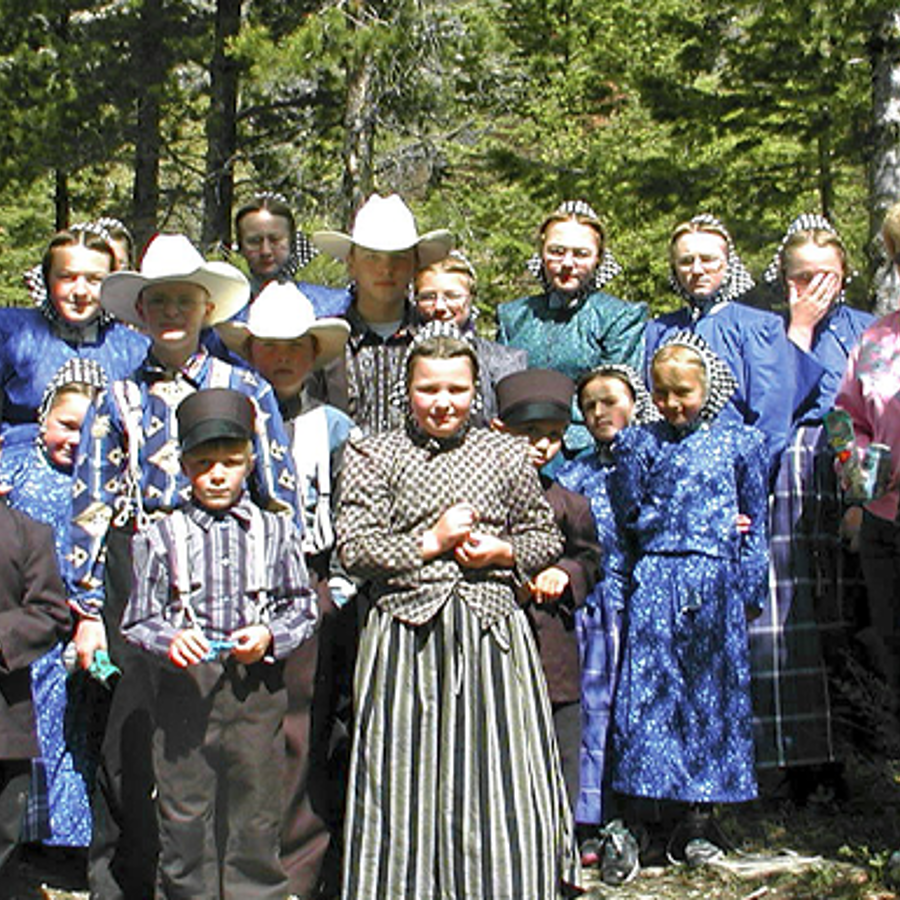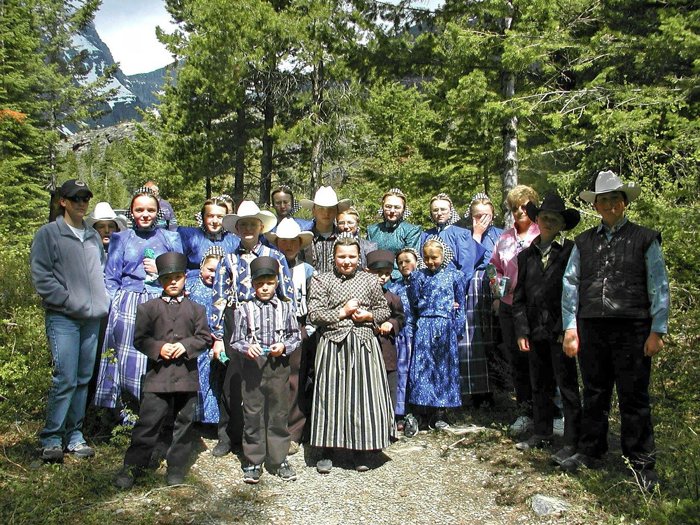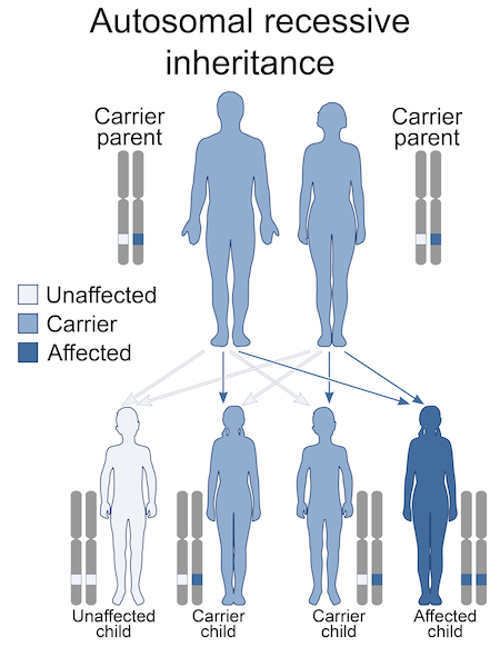
Why is it not as dangerous as people used to think for first cousins to have children together?
May 14, 2015

- Related Topics:
- Intermarriage,
- Complicated family trees,
- Autosomal recessive inheritance,
- Carrier
A curious adult from California asks:
"Why is it not as dangerous as people used to think for first cousins to have children together?"
Turns out it is at least partly because our DNA isn’t as messed up as we thought. There are fewer deadly diseases lurking in our genome.
It was always thought that each of us has 5-10 potentially fatal diseases in our DNA. Even if this were true, it isn’t as bad as it sounds.
For someone to end up with one of these diseases, both parents have to have the same disease in their DNA. This isn’t common because each of these diseases is very rare. It is unlikely that both parents will share the same ones.
This is why the more closely related two parents are, the more likely their child will suffer a genetic problem. Related people share DNA and so are more likely to share the same deadly pieces of DNA.
A new study suggests that instead of 5-10, we each have on average less than one.1 This is probably a big reason why it isn’t as risky for first cousins to have kids as was previously thought.

Of course this doesn’t mean there is no risk. There is always some risk that a child will have a genetic problem.
As we discuss in detail here, everyone’s kids have at least a 2-3% chance of ending up with some sort of genetic issue. For first cousins the number goes up to around 5%.2 Higher yes but it still means that each child has a 95% chance of no genetic problems.
So children of first cousins are at a higher risk for a genetic problem. It is just that the risk is not as large as was previously thought.
Mom + Dad = Genetic Disease
A gene is a piece of DNA that has the instructions for one small part of us. Sometimes the gene ends up with a mistake (or mutation) that can affect those instructions. If the gene is an important one, then that mutation might lead to a disease.
Luckily for us we have two copies of most of our genes, one from mom and one from dad. In many cases that extra copy can serve as a backup for the broken one. In other words, many genetic diseases can only happen when both copies of a gene are messed up. (These are called recessive diseases.)
What this also means is that there are healthy people who have one working and one broken copy of one of these genes. These “carriers” do not have the disease but they can pass their broken gene down to their child. If both parents are carriers, then each of their children has a 1 in 4 chance of ending up with the genetic disease:

Luckily again these broken genes are scattered here and there in the population. So you might have a broken CFTR gene that can cause cystic fibrosis (CF) when paired with another broken CFTR gene. But this isn’t a problem because your partner has two perfectly fine CFTR genes. It is very unlikely the two of you would have any kids with CF.
Of course, your partner might have a broken HEXA gene that could lead to Tay Sachs for your kids if you had a broken HEXA gene too. But you don’t. So your kids are safe from Tay Sachs as well.
As you can probably tell, there is a bit of chance (or bad luck) in both parents having the same broken copy. But bad luck isn’t the whole story. There are a few situations where parents will have higher odds of both having the same broken copy.
Game Changers
One way to increase the odds of both parents sharing the same gene version that leads to a disease is if they have a similar background. For example, around 1 in 29 people of European descent are carriers for cystic fibrosis while only 1 in 65 African Americans are.
On average, a couple made up of two people of European descent are more likely to have a child with cystic fibrosis than is a couple made up of a person of European and a person of African descent. This is because people of European descent are more likely to be carriers and so the first couple is more likely to share a version of the CFTR gene that leads to cystic fibrosis.
For sickle cell anemia, the situation is reversed. Around 1 in 12 African Americans is a carrier while only 1 in 120 or so people of European descent are (the risk is higher for those of southern European descent). Again on average two African American parents are more likely to have a child with sickle cell anemia than is an African American parent and a parent of European descent.
The same sort of thing happens when the parents are closely related. They are more likely to share the same disease gene version compared to two unrelated people.
Which gets us back to your question. The more of these disease gene versions we all have, the more likely we are to share the same ones.
If everyone’s genes were made up of a healthy copy and a disease copy, then obviously each parent would have a 100% chance of sharing the same disease genes. And if we all had only healthy copies, then the odds of the two of us sharing a disease copy would be zero. Reality is somewhere in between.
This is a big reason why the children of first cousins are at a lower risk than we thought. Instead of 5-10 of these lethal genetic diseases, our DNA has on average less than one.
Again it is important to emphasize that first cousins having kids together is not risk free. There is an increased risk. It just isn’t as high as many people had assumed.

Author: Dr. D. Barry Starr
Barry served as The Tech Geneticist from 2002-2018. He founded Ask-a-Geneticist, answered thousands of questions submitted by people from all around the world, and oversaw and edited all articles published during his tenure. AAG is part of the Stanford at The Tech program, which brings Stanford scientists to The Tech to answer questions for this site, as well as to run science activities with visitors at The Tech Interactive in downtown San Jose.
 Skip Navigation
Skip Navigation
